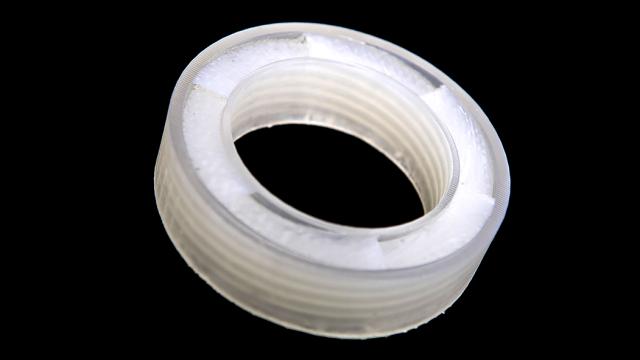The most effective way to block an annoying sound is to simply build a barrier — the thicker, the better. But instead of everyone living in sound-blocking caves in a few years as noisy drones criss-cross the skies, researchers at Boston University have engineered an acoustic meta material that’s designed to silence annoying sounds at their source, without blocking the movement of air.
Moving air creates noise, there’s just no way around it. That’s how sound works here on Earth, and why you can’t hear anything in the vacuum of space. Sometimes it’s intentional and pleasant; like talking, or music, but quite often it’s an annoying whine produced by machines like heating and cooling systems, jet engines, or propeller blades that are all specifically designed to move air.
There have been a few clever innovations designed to make devices that move air sound more pleasant to the human ear—Dyson’s bladeless fans and hair dryers come to mind—but researchers Reza Ghaffarivardavagh and Xin Zhang from Boston University have come up with a solution that outperforms them all, without impeding the actual movement of air which is what makes most sound blocking approaches impractical for products like cooling fans, or drones.
Starting with computer simulations, the Boston University researchers developed a new material engineered with a 3D structure that can reflect the vibrations and disturbances in the air that create noise, back towards their source. The sounds don’t magically disappear, but through a strategic installation and positioning of this new metamaterial, they can be directed away from human ears which is all that’s really important. No one complains about the noises they never actually hear.
The first prototype was designed to mute sounds travelling down a PVC pipe situated in front of a booming loudspeaker. As a result, the 3D-printed part looks almost like a plastic doughnut with a hole in the middle that allows air to pass through unimpeded but surrounded by a unique 3D helical pattern that prevents sounds from slipping through as well. The results? An impressive claim of a 94-per cent drop in noise produced by a high-pitch tone emitted from a speaker. With the prototype installed at the end of the pipe connected to the speaker the tone nearly imperceptible to the human ear.
Those are promising results from just the first prototype, and as the team works to refine and perfect their meta material, they will almost certainly improve its ability to block sound. The material also doesn’t necessarily have to be manufactured in the same round shape as the prototype. A ring would certainly be useful for silencing the spinning blades of a computer’s cooling fan, or the high-pitched whine of a tiny propeller on a drone, but the meta material will work just as well in the shape of a cube or a hexagon, easily allowing large sound-blocking walls to be assembled.
The vibrations of an MRI machine are known to produce a series of loud noises that patients have to endure while they’re being imaged—often times for well over an hour. Thanks to software simulations and the flexibility of 3D printing, this acoustic meta material could be custom-engineered to fit between an MRI machine’s magnetic coils and a patient, wrapping them in a bubble of quiet and making the procedure considerably less intimidating. But for time being I just need one for my alarm clock every morning.
